|
By accessing or using The Crittenden Automotive Library™/CarsAndRacingStuff.com, you signify your agreement with the Terms of Use on our Legal Information page. Our Privacy Policy is also available there. |

Do car manufacturers care about design?
|
|---|
|
|
Do car manufacturers care about design?
Matt Hubbard
Speedmonkey
October 28, 2012
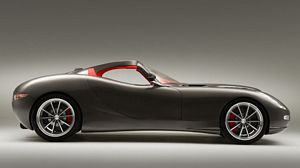 Trident Iceni Trident Iceni
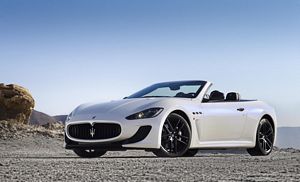 Maserati GranCabrio Maserati GranCabrio
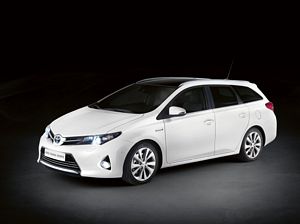 Toyota Auris Touring Sports Toyota Auris Touring Sports
 Ford Ecosport Ford Ecosport
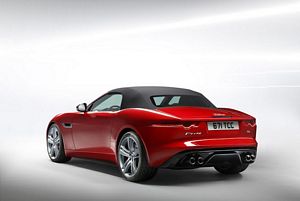 Jaguar F-type Jaguar F-type
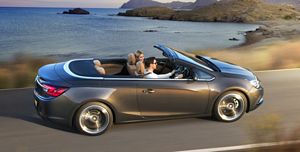 Vauxhall Cascada Vauxhall Cascada
|
Automotive design comes in many forms. Design is applied to everything from an ashtray or cup holder through to the angle of a car's windscreen compared to the bonnet. Design should be an individual's vision formed by a set of principles according to function, corporate desire, government regulations, cost - and the strength and beauty of the principal vision in the first place.
All new car designs are influenced by the above factors - as well as other more minor elements. How the resulting product turns out will be matter of which of these factors were higher or lower influencers in the design and manufacturing process.
Car manufacturers are not one homogenous lump turning out automobiles on a daily basis but rather a myriad of individual companies who produce cars for one reason - to make money. Whether those cars are beautiful or not only matters if, and when, they impact on sales. For the larger manufacturers factors such as convenience, practicality, reliability, brand and cost matter the most. To a smaller manufacturer who needs to stand out in a crowded marketplace these factors are important - but more important is the need to create a machine that people will admire - and once they have admired, will hopefully buy.
For the smaller manufacturers it is almost a given that new product will be well designed. As well as the fact a designer will be hindered less by corporate 'vision', the manufacturer themselves know that a beautiful or, at the very least, individual, sportscar (for most small car companies make sportscars) will sell more than a bland sportscar. Look at the Trident Iceni or Morgan Aero for evidence of that.
Even mid-sized companies such as Maserati or Lambourghini understand that to stand out is to sell more. The new Maserati GranCabrio is a beautifully proportioned convertible and any modern Lamborghini, whilst not necessarily beautiful, is a fiercely individual and handsome beast.
So then we turn to large auto manufacturers and it is here the matter of design starts to diversify. Specifically it is here that an individual designers vision starts to become blandified and watered down to the point, in some cases, where there is no individual design evident in some cars. It is here that corporate influence and design by committee too often starts to take precedence over any kind of vision.
Here at Speedmonkey we often rail against blandness or ugliness. It doesn't cost any money - and it won't harm sales - to try and make an effort. To try and make the world a prettier place. But so often the cost, corporate and convenience factors stamp their mark on a car much more than beauty.
Take the Ford Focus. By the late 90s Ford's Escort had become a lightweight. Sales were down and the once proud name sat upon a car that looked out of place in the modern world. And then Ford brought out the Focus - to universal acclaim. It's looks were bold - inside as well as outside. It sold well. Then in 2005 Ford brought out a revised version that took the overall shape of the original Focus and gave us a design that watered down, smoothed out and covered-over most of the original design pointers that made the Focus such a great car in the first place. Then, in 2011 it brought out a new model and did the same but even more so. The Focus we see today is a third gen, homogenous, shadow of it's 1998 incarnation.
And Honda have done the same with the Civic. 2006's Civic was a bold, brave move by Honda. It was a wonderful looking car with lovely touches inside and out. In 2011 they took the corporate sandpaper to it and rubbed out all the parts that made the first gen such a wonderful statement.
Honda have done the same with the new Accord but this time instead of even allowing the fantastic looking concept to go anywhere the showroom they will be giving us a low fat version with all the vision ironed out. The 2013 Accord is a huge disappointment - a mere, bland, shadow of the concept.
Toyota's design department must be the most depressed team of people in all of Japan. If any of them ever joined the company thinking they could make any difference then they will have been bitterly disappointed. Witness the Auris Hybrid (
which we gave a right kicking here) and estate (
similarly, have a look here for it's ritual kicking) to see that. The frustrating thing is that they are perfectly willing to get someone else to design a great car for them (GT86) and to stick the Toyota badge on it.
BMW are another frustrating company. They make great machines but ever since they hired Chris Bangle have gone down a design cul-de-sac. Even since he's left BMW have failed to make a genuinely thrilling looking car. The M135i is a monstrous carbuncle and as for the X3...
Ford's Ecosport is the most recent example of rancid design being allowed, unchecked, to leave the factory. And no-one except us even notices, or comments, on how hideous it looks. Ford have a reputation of being managed by committee. One imagines the committee who agreed to let it out of Brazil was made of up blind people.
Other horrendous cars include the Porsche Panamera and first generation Cayenne, and Bentley's God-awful EXP 9 F concept which, if they ever make it, will be the most ugly Bentley in the history of the company.
But there are shining examples of design done well. Audi, Jaguar, Land Rover, McLaren, Mercedes-Benz, Aston Martin, Volkswagen and the aforementioned Morgan and Maserati all turn out well proportioned, well designed cars. Porsche have vastly improved the Panamera's looks with the new Sports Touring concept and the newer Cayenne looks much better than the first one.
Vauxhall have recently released a couple of crackers in the shape of the new ADAM and Cascada convertible. And you know why? Because they let an individual, called Mark Smith, design it and then reigned in the corporate influence just before the point where it started to materially affect Smith's vision.
The point of this article is to highlight what we feel is the insidious, creeping menace of corporate 'vision'. The commitee-fication of design. The influence of accountants and brand managers over human beings. If we fail to show the guilty manufacturers how we feel, if we fail to care, if we continue to buy these cars then we will eventually end up with what we deserve - bland, characterless lumps of metal distinguished by nothing more than a corporate logo.
Good design works well when a corporation trusts its employees. When it hires a talented designer with vision and then gives him or her control over most aspects of the look, touch and feel of a car with a minimum of interference. That is when good design works well.
Unless that individual is called Chris Bangle.

















 Trident Iceni
Trident Iceni
 Maserati GranCabrio
Maserati GranCabrio
 Toyota Auris Touring Sports
Toyota Auris Touring Sports
 Ford Ecosport
Ford Ecosport
 Jaguar F-type
Jaguar F-type
 Vauxhall Cascada
Vauxhall Cascada
